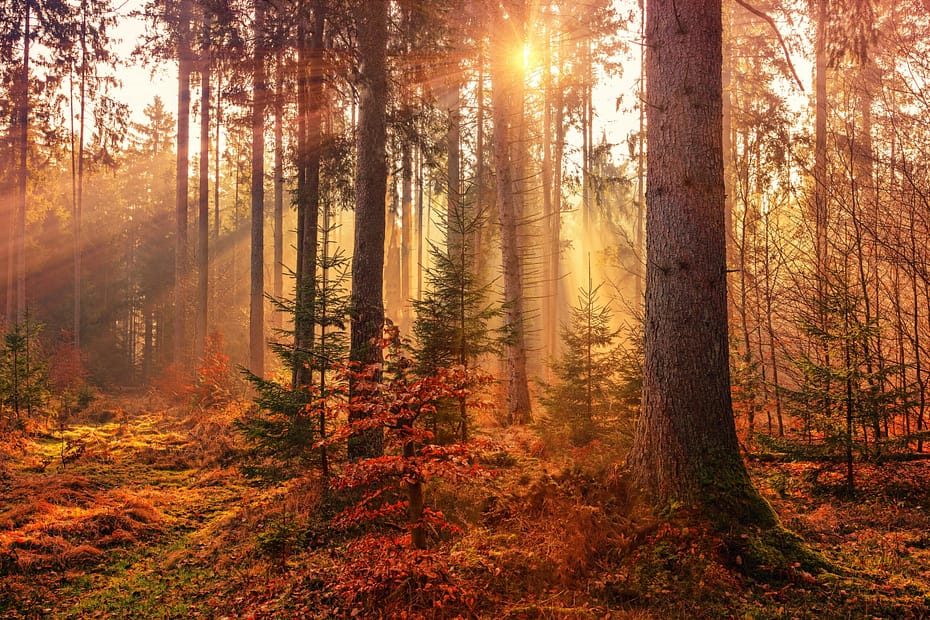As the leaves begin to change and the air turns crisp, autumn hues paint the landscape in a stunning display of vibrant autumn colours. For photographers, this is a prime time to capture the beauty of nature and create colourful landscapes that will leave viewers in awe. But capturing the vibrant colours of fall can be challenging, requiring a combination of technical skill and artistic vision. This article will discuss how to capture vibrant autumn colours and master the art of fall colour photography. We will delve into the science behind the changing colours, the importance of timing and location, the necessary equipment and settings, and the art of composition and framing. We will also explore how to play with light, the role of post-processing, and the importance of capturing the details and embracing the imperfections.
Understanding Autumn Hues
Before we dive into the technical aspects of capturing fall colours, it’s important to understand the science behind the changing leaves. As the days get shorter and the temperatures drop, chlorophyll production in leaves decreases, causing the green pigment to fade. This allows other pigments, such as carotenoids and anthocyanins, to become more visible, creating the vibrant reds, oranges, and yellows we associate with fall.
These pigments are always present in the leaves, but the predominant green chlorophyll colour overshadows these pigments. As the chlorophyll breaks down, hidden colours emerge, transforming the landscape into a riot of colour.
Choosing the Right Time and Location
Timing is crucial when it comes to capturing vibrant autumn colours. The peak of fall foliage varies depending on location and can last anywhere from a few days to a few weeks. Research the best time to visit your desired location for fall colours and plan your trip accordingly. Remember that the peak colour period is short, and the colours can change rapidly. Therefore, it’s essential to be flexible and ready to seize the moment when the colours are at their most vibrant.
In addition to timing, the location you choose can significantly impact the colours you capture. Look for areas with a variety of tree species, as different types of trees will change colours at different times. Also, consider the landscape and how it will complement the fall colours. A mix of mountains, lakes, and forests can create a stunning backdrop for your photos. The contrast between the vibrant fall colours and the natural landscape can create a dramatic effect, enhancing the beauty of your photos.
Equipment and Settings
To capture the vibrant autumn colours, you will need the right equipment and camera settings. A DSLR or mirrorless camera with a wide aperture lens (f/2.8 or lower) is ideal for capturing the details and colours of fall foliage. A tripod can also be helpful in keeping your camera steady and allowing for longer exposures. Additionally, consider using a polarizing filter to reduce glare and enhance the colours in your photos.
Regarding camera settings, shooting in RAW format is recommended as it allows for more flexibility in post-processing. Use a low ISO (100-400) to reduce noise and a fast shutter speed (1/250 or higher) to avoid motion blur. Experiment with different aperture settings to find the right balance between depth of field and sharpness. Remember, a smaller aperture (higher f-number) will give you a greater depth of field, allowing more of your scene to be in focus.

Composition and Framing
Composition is critical in creating impactful fall colour photos. Look for leading lines, such as a winding road or a river, to draw the viewer’s eye into the picture. Use the rule of thirds to create a balanced composition, and consider incorporating elements of foreground, middle ground, and background to add depth to your photos. Also, pay attention to the colour balance in your photos. Try to create a harmonious colour palette by including a variety of colours and tones.
Framing is another important aspect of composition. Use natural elements, such as trees or branches, to frame your subject and add interest to your photos. This can also create a sense of scale and showcase the vastness of the fall landscape. Experiment with different framing techniques to find what works best for your subject and the scene you are trying to capture.
Playing with Light
Lighting can make or break a photo, and this is especially true when it comes to capturing fall colours. The warm, golden light of sunrise and sunset can enhance the colours of fall foliage and create a magical atmosphere. Plan your shoots accordingly and be prepared to wake up early or stay out late to capture the best light. The soft, diffused light during these golden hours can add a beautiful glow to your photos, making the colours pop.
Feel free to experiment with lighting conditions, such as backlighting or side lighting, to add depth and dimension to your photos. And if the weather is overcast, don’t let it discourage you. Overcast skies can create a soft, diffused light that can be perfect for capturing the colours of fall. Actually, the muted light on cloudy days can often result in more saturated colours, as it reduces the contrast and allows the colours to shine through.
Post-Processing
Post-processing is an essential part of digital photography, and it can significantly enhance the colours of your fall photos. Use editing software, such as Adobe Lightroom or Photoshop, to adjust your photos’ white balance, contrast, and saturation. Be careful not to overdo it, as too much editing can make your photos look unnatural. It’s important to strike a balance between enhancing the colours and maintaining a natural look.
When it comes to adjusting colours, pay attention to the individual hues in your photo. Use the HSL (hue, saturation, and luminance) sliders to fine-tune the colours and make them pop. You can also use the graduated filter tool to adjust the colours in different areas of your photo selectively. This can be particularly useful when you want to enhance specific colours or areas of your photo without affecting the rest of the image.
Capturing the Details
While capturing the overall landscape is essential, remember to focus on the smaller details of fall foliage as well. Look for individual leaves or clusters of leaves with interesting colours or patterns. Use a macro lens or extension tubes to capture the intricate details of these smaller elements. These close-up shots can add a different perspective to your fall colour photography and showcase the beauty of nature more intimately.
You can also experiment with different angles and perspectives to capture unique fall foliage shots. Get down low and shoot upwards to capture the leaves against the sky, or try shooting from above to capture the leaves from a different perspective. These different perspectives can add variety to your photos and create a more dynamic and engaging visual narrative.

Embracing the Imperfections
Fall foliage can be unpredictable, and sometimes, the colours may not be as vibrant as you had hoped. Instead of getting discouraged, embrace the imperfections and use them to your advantage. A mix of green and orange leaves can create a beautiful contrast, and a few brown leaves can add a touch of realism to your photos. These imperfections can add character to your photos, making them more exciting and unique.
Also, don’t be afraid to include elements of the changing season, such as bare trees or fallen leaves, in your photos. These can add depth and tell a story about the transition from summer to fall. They can also create a sense of time and place, adding another layer of meaning to your photos.
Conclusion
Capturing the beauty of vibrant autumn colours requires a combination of technical skill and artistic vision. By understanding the science behind autumn hues, choosing the right time and location, and using the right equipment and settings, you can create stunning photos of colourful landscapes. Remember to pay attention to composition, lighting, and post-processing, and don’t be afraid to embrace imperfections. With these tips in mind, you can master the art of fall colour photography and create photos that will leave a lasting impression on viewers. So grab your camera, head out into the great outdoors, and start capturing the breathtaking beauty of fall.
- Mastering the selective color effect in photography - March 19, 2024
- Expert Tips for Taking Stunning Christmas Photos at Home - December 21, 2023
- Capturing Moments: Inspiring Photography Quotes - November 13, 2023

